Blued vs Stainless: 5 Parameters-Based Comparison To Find Winner
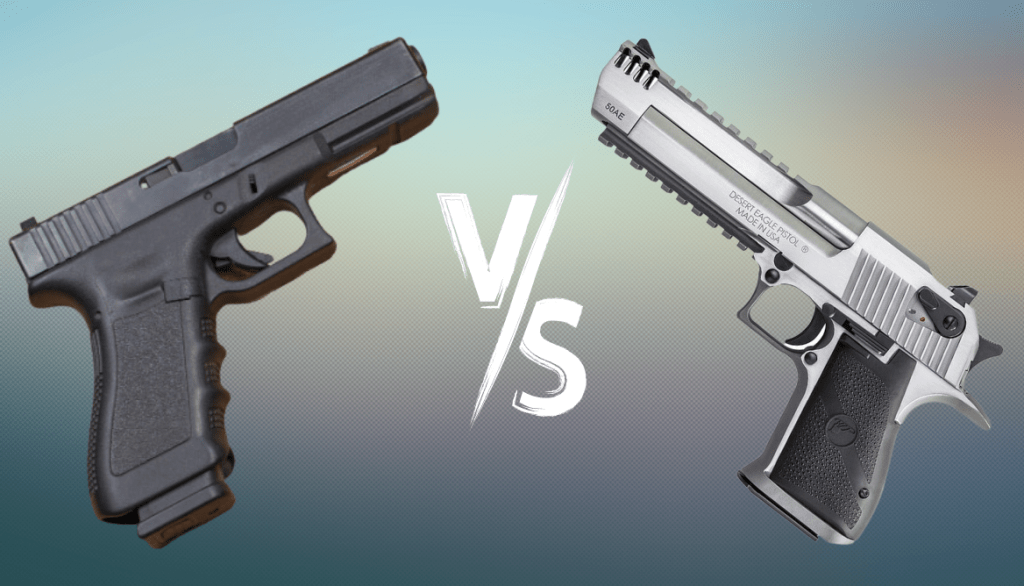
Blued vs Stainless barrel is one of the common arguments among gun enthusiasts! While stainless weapons ensure durability and ruggedness, the blued guns guarantee less light reflection.
In this article, we will be diving into the details of both materials, the differences, pros, and cons of both materials. Let’s get started!
A Quick Outlook of Blued Guns
Bluing is defined as a shielding process that enhances the appearance and reflectiveness of the surface of a gun. This coating is applied to firearms and has the following properties:
- The blued finish or carbon steel material is a highly versatile material.
- It creates a layer on the metal parts of the gun especially the barrel to protect it from frictional damage, rusting, and dullness.
- A special kit is used for the bluing process and some guns may require frequent chemical conversions.

Here is a video to help you understand the process!
An Insight Into Stainless Steel
Here’s what you need to know about stainless steel:
- Professionals prefer stainless steel firearms due to their durability.
- An average gun user may confuse stainless steel as a finish although it is a temporary coating applied to the whole gun. No surface finish is applied after this coating is done.
- Scratches are less visible and rust resistance is higher compared to other applied surface finish.
- This is perfect for indoor and outdoor use in any type of weather.

Check out this video to learn more!
Stainless vs Blued: Head to Head in 5 Different Parameters
Some gun enthusiasts prefer blued barrels are the best while others favor stainless steel due to its tough material. Let’s have a look and get a better understanding of both types!
1. Military Applications and Preference
Average users prefer stainless steel barreled weapons as the heat build-up is slower. But, military applications require high-heat tolerance.
- Soldiers have to operate in harsh environments therefore a weapon that can withstand extreme heat is best suited.
- Machine guns and other automatic firearms can generate around 1200 °F temperature.
- During World War II, gunners would fire the weapon until it heated the barrel needed to be swapped with a new one.
- The US military field tested both and finally concluded that blued guns have more advantages.
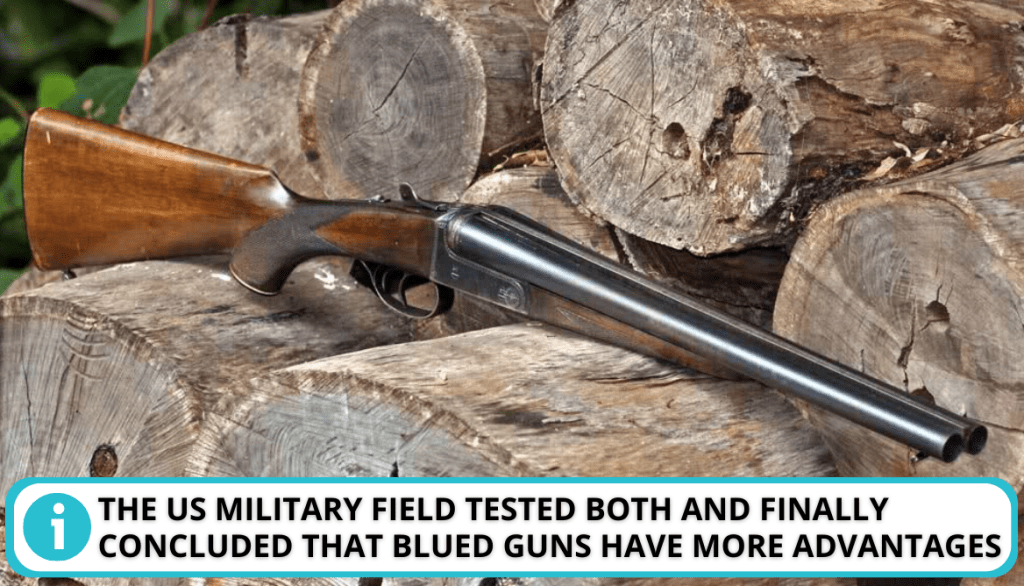
2. Ability to Withstand Harsh Weather
Many hunters in the Alaskan, Wyoming, and Montana regions have made different claims of blued steel handles or barrels operating perfectly in cold temperatures.
- They even stated that shooting a bullet using a stainless steel barrel weapon at -40 °F would result in a splitting of the barrel.
- This is due to the quick temperature changes in the material.
- These claims are yet to be tested out by experts in the field.
- Whereas the Nitre blued coating has shown a tolerance of ~600 °F.
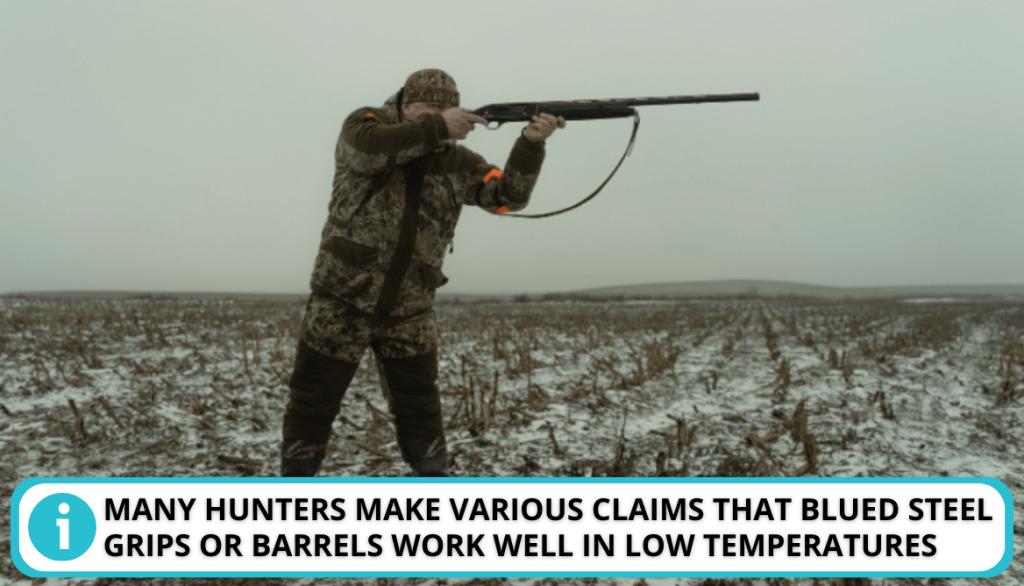
3. Reflections: Stealth or Non-Stealth Approach?
The visibility of your weapon is a critical factor while hunting or on the battlefield.
- A blued surface reflects less light compared to stainless guns. They have a smooth silver surface that can shine like a mirror in direct sunlight.
- In a combat situation, light reflected from your rifle barrel can tell the enemy about your position.
- A blued gun has a less shiny finish which reduces the change of light reflection.
4. Rust Proof: Which One is Better?
Environmental hazards on a weapon during hunting or on the battlefield can cause rusting if it is exposed to rain and snow.
- Any level of moisture is always a danger to your piston, revolver, or rifle.
- For blued steel, even a small nick on the surface can create a passage under the coating for potential damage.
- A stainless gun is ideal for wet environments as it is highly resistant to moisture.

5. Highlighting the Main Differences Between Blued and Stainless Guns
Blued and stainless steel are two coatings. While one may have an advantage over the other even then both have their own perks. Check out the table to learn more!
Feature | Stainless Steel Guns | Blued Guns |
Appearance: | Silver or gray | Deep, dark blue or black |
Rust Resistant: | Excellent | Regular maintenance needed |
Durability: | Very good | Average |
Scratch Resistance: | Good | Average |
Maintenance: | Minimal | Regular maintenance required |
Price: | Pricey | Reasonable |
Reflection: | Highly reflective | Reduces surface-reflection |
Concealability: | Difficult to conceal | Easily concealed |
Suitability: | All-purpose | Concealed carry, self-defense |
Heat Resistance: | Good | High level of heat discolor surface |
Pros and Cons of Blue Steel
Here are some pros you should know:
- Blued guns are very famous for their aesthetic and traditional look.
- They are easier to conceal and suitable for tactical use.
- They are highly affordable making them accessible for a wide audience.
- The chemical coat allows the rifle to resist extreme temperatures.
Mentioned below is a list of cons of blued steel!
- They are less durable compared to stainless steel weapons.
- Once nicked, they are sensitive to rusting and water damage.
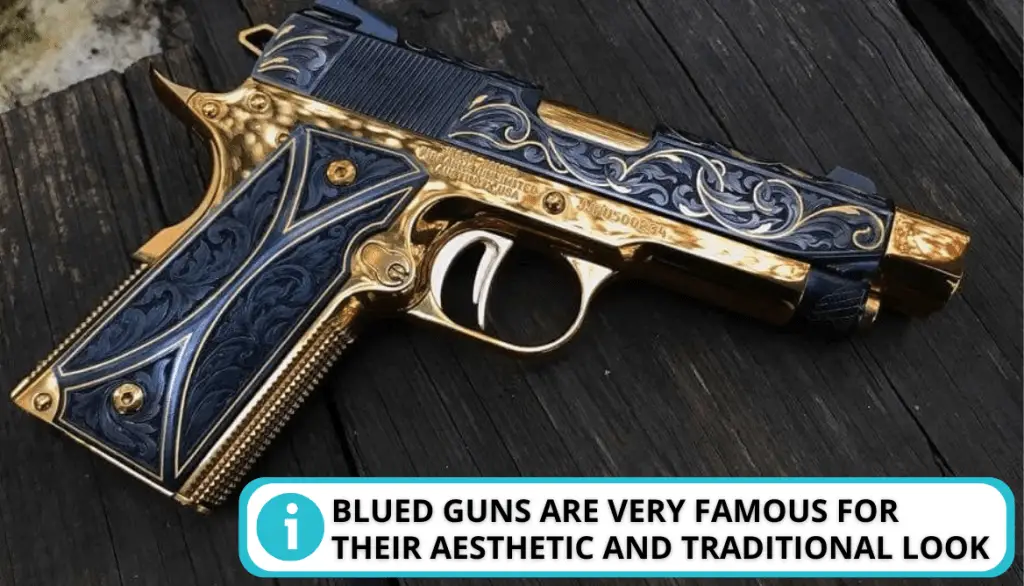
Pros and Cons of Stainless Steel
Here are some pros of stainless steel!
- Stainless steel guns require very less maintenance for e.g. regular touch-ups compared to blued/carbon steel. (Here is how you polish your gun.)
- This material is highly durable and resistant to wear.
- Rust/corrosion does not occur even in harsh weather conditions.
- Stainless guns are scratch resistant and prevent damage from friction.
- Weapons made from this material are all-purpose e.g. hunting applications, competitive shooting, and military use.
Listed below are the cons:
- Stainless guns are pricey and the manufacturing process is costlier.
- They are heavier and may prove disadvantageous if carried for a longer duration.
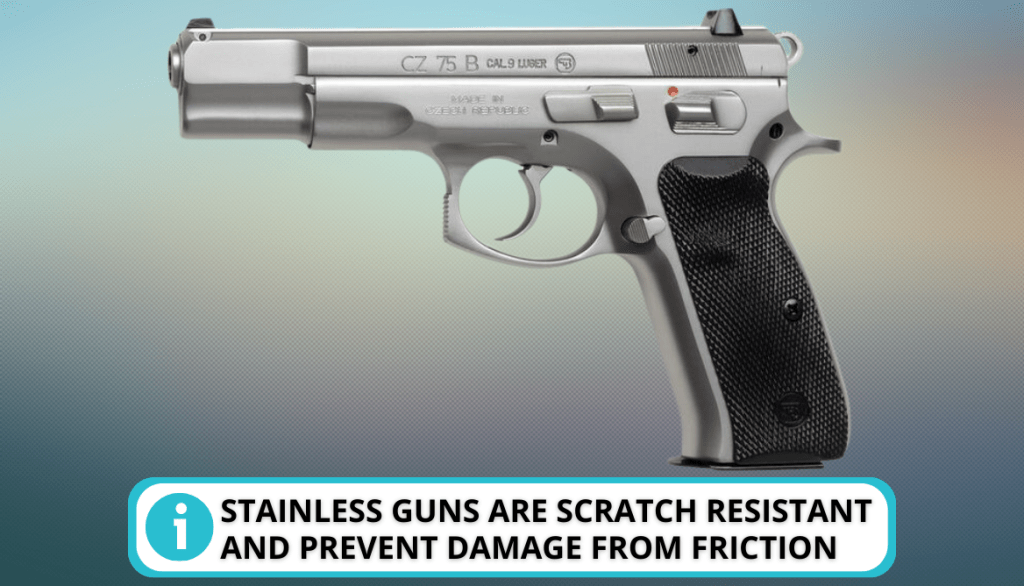
Blued vs Stainless: Comparing Both Options
Selecting blued or stainless steel depends on your need, requirement, or use of the weapon in a certain type of environment. Although, the budget also plays an important role when choosing one of them. Here are some helpful pointers to clear your concepts. Let’s dive in!
Blued Gun:
Here are some features of the blued guns. Let’s learn about them:
- Blued guns have a more aesthetic and superior appearance.
- They are much more resistant to scratches.
- The coating helps in providing excellent heat dissipation.
- Accuracy is far better when using a blued rifle especially if the barrel has the coating.
- They last for more years when compared to their counterpart.
- The amount of heat and cold these weapons can withstand is exceptional.
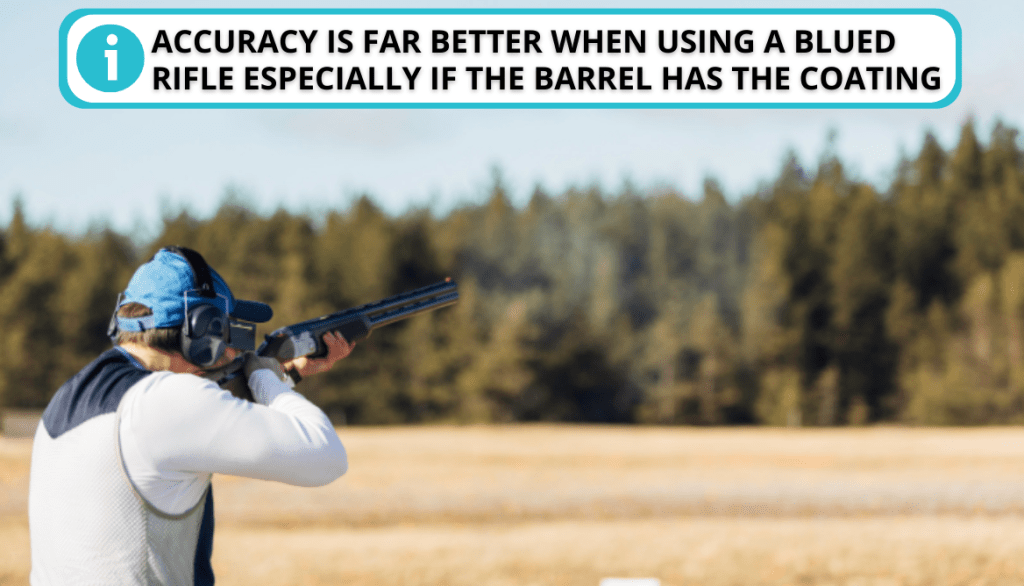
Stainless Steel Gun:
Check out the unique features of stainless steel weapons. Let’s dive in!
- A lot of experts claim that this material can be machined deeper as compared to stainless steel.
- It has more rust tolerance.
- Rifles made with perfection provide an excellent shooting experience.
- Repeated shooting does not heat up the material. In a long-term shooting experience, a stainless steel gun wins the competition in this aspect.

FAQ
What’s the difference between Blued Steel and stainless steel?
The difference is that a blued gun performs well on the range but extreme weather conditions or blood can cause damage to the finish of the weapon. In comparison, stainless steel has less finish but it is more resistant to rust compared to blued firearm.
Can you use blue stainless steel on a gun?
Using blued stainless steel on a gun makes the gun less visible as stainless steel shines a lot under sunlight.
Is a blued barrel more accurate than a stainless steel barrel?
Blued barrels are more accurate than stainless steel ones due to their ability to maintain a threshold in very cold or hot weather.
Does blued steel rust?
Blued steel can still get rusted as it is a chemical conversion process for coating the metal. It is not similar to a plated coating which is more durable against wear and rusting.
Why can stainless steel resist rust and corrosion?
Stainless steel is more resistant to rust and corrosion as it limits the exposure of oxygen and water to the metal underneath.
Conclusion
Many people usually argue about blued vs stainless weapons giving credit to one or the other. It is evident that each of them has an advantage over the others such as corrosion resistance or reducing the light-reflecting effect.
If you ask for our recommendation, we will go with Blues due to better temperature resistance and reflection control. But in the end, it all comes down to the requirements and environment the weapon is being used in. Which one do you like the most and why? Let us know in the comments section!
